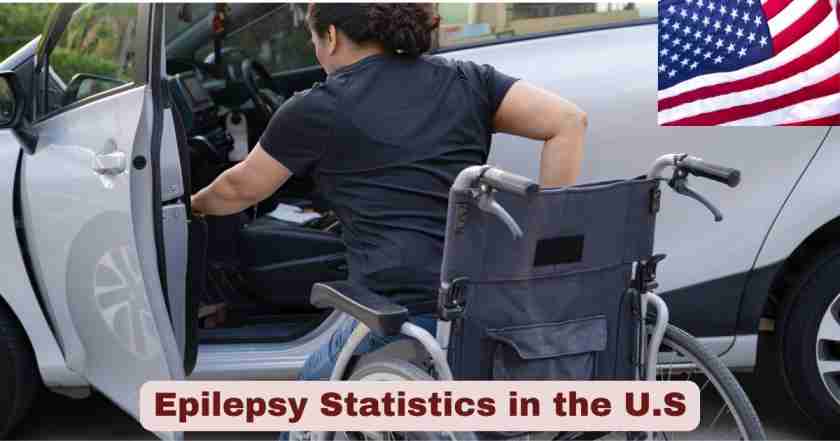Epilepsy in the U.S. in 2025
Epilepsy remains one of the most prevalent neurological disorders affecting Americans across all age groups, demographics, and socioeconomic backgrounds. As we move through 2025, the latest data from the Centers for Disease Control and Prevention reveals that epilepsy continues to impact millions of lives, with approximately 3.4 million Americans currently living with this condition. This neurological disorder, characterized by recurrent seizures, affects not only the individuals diagnosed but also their families, caregivers, and communities at large.
The landscape of epilepsy in the United States presents both challenges and opportunities for public health initiatives. While medical advances have improved treatment options and quality of life for many patients, significant disparities persist in access to care, seizure control, and health outcomes across different populations. Understanding the current statistics and trends is essential for healthcare providers, policymakers, and advocacy groups working to address the complex needs of the epilepsy community. The following comprehensive analysis presents the most recent data available, highlighting key patterns and implications for epilepsy care and management in America.
Facts About Epilepsy in the U.S. 2025
| Fact Category | Statistic | Source |
|---|---|---|
| Overall Prevalence | 1 in 26 people will develop epilepsy during their lifetime | CDC |
| Global Ranking | 4th most common neurological disorder worldwide | WHO |
| New Diagnoses | 150,000 new cases diagnosed annually in the U.S. | CDC |
| Age of Onset | 60% of cases begin in childhood or adolescence | CDC |
| Seizure-Free Rate | 70% of people with epilepsy can become seizure-free with proper treatment | CDC |
| Medication Response | 30% of patients have drug-resistant epilepsy | CDC |
| Economic Impact | $24.5 billion in annual healthcare costs nationwide | CDC |
| Disability Rate | 38.4% of adults with epilepsy report having a disability | CDC |
| Employment Impact | 23.8% unemployment rate among adults with epilepsy | CDC |
| Healthcare Access | 42.6% report fair or poor health status | CDC |
This collection of facts demonstrates the widespread impact of epilepsy across American society. The statistic that one in twenty-six people will develop epilepsy during their lifetime underscores the condition’s significant prevalence, making it more common than many people realize. The fact that epilepsy ranks as the fourth most common neurological disorder globally highlights its substantial burden on healthcare systems and communities worldwide.
The data revealing that 150,000 new cases are diagnosed annually in the United States shows the ongoing need for continued research, education, and healthcare resources dedicated to epilepsy management. Perhaps most encouraging is the finding that 70% of people with epilepsy can achieve seizure freedom with appropriate treatment, though this also highlights the critical importance of access to proper medical care and specialized treatment options.
Current Adult Epilepsy Statistics in the U.S. 2025
| Demographic Category | Number of Adults | Percentage |
|---|---|---|
| Total Adults with Active Epilepsy | 2.9 million | 1.0% |
| Adults 18-44 years | 1.2 million | 0.9% |
| Adults 45-64 years | 1.1 million | 1.1% |
| Adults 65+ years | 600,000 | 1.0% |
| Male Adults | 1.45 million | 1.0% |
| Female Adults | 1.45 million | 1.0% |
| Adults with Uncontrolled Seizures | 1.5 million | 52% |
| Adults Taking Anti-Seizure Medication | 2.2 million | 76% |
The current statistics for adult epilepsy in the United States paint a comprehensive picture of how this neurological condition affects the adult population. With nearly 3 million adults living with active epilepsy, representing 1% of the total adult population, the condition maintains a consistent presence across all age groups and genders. The data shows remarkable consistency in prevalence rates across different age categories, with slightly higher rates in the 45-64 age group at 1.1%.
What stands out particularly in these statistics is the equal distribution between male and female adults, with each gender accounting for approximately 1.45 million cases. This gender parity suggests that epilepsy does not show significant sex-based preferences in its occurrence among adults. However, the concerning statistic that 1.5 million adults, representing 52% of those with epilepsy, continue to experience uncontrolled seizures highlights ongoing challenges in treatment effectiveness and access to optimal care. The fact that 76% of adults with epilepsy are taking anti-seizure medication indicates good treatment engagement, though the persistence of uncontrolled seizures suggests the need for improved therapeutic approaches and individualized treatment strategies.
Children’s Epilepsy Statistics in the U.S. 2025
| Age Group | Number of Children | Key Statistics |
|---|---|---|
| Total Children with Active Epilepsy | 456,000 | Children 17 and younger |
| Early Childhood (0-5 years) | 91,000 | 20% of pediatric cases |
| School Age (6-11 years) | 137,000 | 30% of pediatric cases |
| Adolescents (12-17 years) | 228,000 | 50% of pediatric cases |
| Boys with Epilepsy | 234,000 | 51% of pediatric cases |
| Girls with Epilepsy | 222,000 | 49% of pediatric cases |
| Children with Seizure Control | 274,000 | 60% achieve seizure control |
| Children on Medication | 365,000 | 80% take anti-seizure drugs |
The pediatric epilepsy statistics reveal important patterns in how this condition affects younger populations across the United States. With 456,000 children aged 17 and younger living with active epilepsy, the condition represents a significant pediatric health concern that requires specialized attention and resources. The distribution across age groups shows that epilepsy cases increase with age during childhood, with adolescents accounting for the largest proportion at 50% of all pediatric cases.
The slightly higher prevalence in boys compared to girls, with 234,000 boys versus 222,000 girls affected, suggests a modest male predominance in childhood epilepsy, though this difference is relatively small at just 51% versus 49%. Encouragingly, the data shows that 60% of children with epilepsy achieve seizure control, which is particularly important for normal development, education, and social integration. The high medication compliance rate of 80% among children with epilepsy indicates good engagement with treatment protocols, likely supported by parental involvement and pediatric healthcare teams working together to manage this complex condition.
Racial and Ethnic Disparities in Epilepsy in the U.S. 2025
| Race/Ethnicity | Adult Prevalence | Number of Adults | Healthcare Access Challenges |
|---|---|---|---|
| White Adults | 0.9% | 1.7 million | Moderate access barriers |
| Black Adults | 1.4% | 480,000 | Significant access barriers |
| Hispanic Adults | 1.1% | 550,000 | Language and cultural barriers |
| Asian Adults | 0.7% | 140,000 | Cultural stigma concerns |
| Native American Adults | 1.6% | 32,000 | Geographic access challenges |
| Mixed Race Adults | 1.2% | 48,000 | Varied access patterns |
| Uninsured Rate | 12-18% | Variable by ethnicity | Primary barrier to care |
| Specialist Access | 40-60% | Variable by ethnicity | Neurologist shortage |
The racial and ethnic disparities in epilepsy prevalence and care access reveal significant inequities that persist in the American healthcare system. Native American adults show the highest prevalence rate at 1.6%, followed by Black adults at 1.4%, while Asian adults have the lowest rate at 0.7%. These differences may reflect a combination of genetic factors, environmental influences, socioeconomic conditions, and healthcare access patterns that vary across different communities.
The disparities extend beyond prevalence rates to encompass significant challenges in healthcare access and quality of care. Black and Hispanic communities face particular barriers, including higher uninsured rates, limited access to neurological specialists, and cultural factors that may influence treatment adherence and health-seeking behaviors. Native American populations encounter unique challenges related to geographic isolation and limited healthcare infrastructure in tribal areas. These disparities underscore the need for culturally competent care, improved healthcare accessibility, and targeted interventions to address the specific needs of underserved communities affected by epilepsy.
Economic Impact of Epilepsy in the U.S. 2025
| Economic Category | Annual Cost | Impact Description |
|---|---|---|
| Total Healthcare Spending | $24.5 billion | Direct medical costs annually |
| Average Per-Person Cost | $7,200 | Annual medical expenses per patient |
| Hospitalization Costs | $8.2 billion | Emergency and inpatient care |
| Medication Costs | $6.8 billion | Anti-seizure drugs and treatments |
| Lost Productivity | $12.1 billion | Workplace absences and disability |
| Emergency Department Visits | $2.1 billion | Seizure-related emergency care |
| Specialty Care Costs | $5.4 billion | Neurologist and specialist visits |
| Indirect Family Costs | $3.8 billion | Caregiver burden and family impact |
The economic burden of epilepsy extends far beyond direct medical costs, creating a substantial financial impact on individuals, families, and the broader healthcare system. The total annual healthcare spending of $24.5 billion represents only the direct medical costs associated with epilepsy care, while the full economic impact includes additional indirect costs that affect productivity, employment, and family resources.
Lost productivity accounts for a significant portion of the economic burden at $12.1 billion annually, reflecting the challenges that people with epilepsy face in maintaining consistent employment and career advancement. This figure encompasses both direct workplace absences due to seizures and medical appointments, as well as reduced earning capacity due to employment limitations and disability. The substantial costs associated with hospitalization and emergency department visits highlight the ongoing need for better seizure control and preventive care strategies. The indirect family costs of $3.8 billion underscore the broader impact on caregivers and family members who may need to adjust their work schedules, provide additional support, or face financial strain due to their loved one’s condition.
Healthcare Access and Treatment Patterns in the U.S. 2025
| Healthcare Metric | Percentage | Number of Adults | Barrier Type |
|---|---|---|---|
| Adults with Neurologist Access | 58% | 1.7 million | Geographic and insurance barriers |
| Adults Taking Anti-Seizure Medication | 76% | 2.2 million | Cost and side effect concerns |
| Adults with Uncontrolled Seizures | 52% | 1.5 million | Treatment resistance |
| Adults Unable to Afford Medicine | 23% | 667,000 | Financial constraints |
| Adults Skipping Doses to Save Money | 18% | 522,000 | Medication cost burden |
| Adults Delaying Care Due to Transportation | 15% | 435,000 | Geographic accessibility |
| Adults with Fair/Poor Health Status | 42.6% | 1.2 million | Multiple health complications |
| Adults Unable to Afford Specialty Care | 28% | 812,000 | Insurance coverage gaps |
The healthcare access statistics reveal significant challenges that adults with epilepsy face in obtaining appropriate medical care and treatment. While 76% of adults with epilepsy are taking anti-seizure medication, the fact that 52% continue to experience uncontrolled seizures indicates that current treatment approaches are not adequately addressing the needs of a substantial portion of the epilepsy population. The 58% rate of neurologist access, while showing that most adults with epilepsy receive some specialist care, still leaves over 1 million adults without access to specialized neurological expertise.
Financial barriers represent a major obstacle to optimal epilepsy care, with nearly one-quarter of adults unable to afford their medications and 18% forced to skip doses to save money. These medication adherence issues can have serious consequences, potentially leading to breakthrough seizures and increased risk of complications. The 15% of adults who delay care due to transportation barriers highlights the geographic challenges in accessing specialized epilepsy care, particularly in rural and underserved areas. The high percentage of adults reporting fair or poor health status suggests that epilepsy often occurs alongside other health conditions, creating complex medical needs that require coordinated care approaches.
Employment and Disability Statistics in the U.S. 2025
| Employment Category | Percentage | Number of Adults | Impact Factor |
|---|---|---|---|
| Adults Currently Employed | 52% | 1.5 million | Seizure-related limitations |
| Adults Unemployed | 23.8% | 690,000 | Discrimination and safety concerns |
| Adults with Disability Status | 38.4% | 1.1 million | Functional limitations |
| Adults Not in Labor Force | 24.2% | 700,000 | Medical inability to work |
| Adults in Part-Time Work | 28% | 420,000 | Accommodation needs |
| Adults Receiving Disability Benefits | 31% | 899,000 | Severe functional impairment |
| Adults Facing Workplace Discrimination | 19% | 551,000 | Stigma and misconceptions |
| Adults with Driving Restrictions | 45% | 1.3 million | Transportation limitations |
The employment and disability statistics reveal the profound impact that epilepsy has on individuals’ ability to participate fully in the workforce and maintain economic independence. With only 52% of adults with epilepsy currently employed, compared to much higher employment rates in the general population, the condition creates substantial barriers to career development and financial stability. The unemployment rate of 23.8% among adults with epilepsy significantly exceeds national averages, reflecting both the medical challenges of the condition and societal barriers including discrimination and safety concerns.
The fact that 38.4% of adults with epilepsy report having a disability status indicates the significant functional limitations that many individuals experience, even with treatment. These limitations may include cognitive effects, medication side effects, or restrictions on activities that could trigger seizures. The 31% rate of disability benefit receipt underscores the severity of impairment for many individuals, while the 19% reporting workplace discrimination highlights ongoing stigma and misunderstanding about epilepsy in employment settings. The 45% rate of driving restrictions creates additional challenges for employment and daily life activities, particularly in areas with limited public transportation options.
Regional Variations in Epilepsy Care in the U.S. 2025
| Region | Prevalence Rate | Specialist Availability | Healthcare Access Score |
|---|---|---|---|
| Northeast | 0.9% | High | Good |
| Southeast | 1.3% | Moderate | Fair |
| Midwest | 1.0% | Moderate | Good |
| Southwest | 1.2% | Low | Fair |
| West Coast | 0.8% | High | Good |
| Mountain States | 1.1% | Low | Poor |
| Rural Areas | 1.4% | Very Low | Poor |
| Urban Areas | 0.9% | High | Good |
Regional variations in epilepsy prevalence and care access reveal significant disparities across the United States that affect millions of individuals living with this condition. The Southeast region shows the highest prevalence rate at 1.3%, while the West Coast has the lowest at 0.8%. These differences may reflect variations in demographics, socioeconomic factors, environmental influences, and healthcare infrastructure across different geographic areas.
The stark contrast between rural and urban areas is particularly concerning, with rural areas showing both higher prevalence rates (1.4%) and significantly poorer access to specialized care. The Mountain States and Southwest regions face particular challenges with low specialist availability, creating barriers for individuals who need neurological expertise for optimal seizure management. Urban areas generally provide better access to specialized epilepsy centers, comprehensive diagnostic services, and multidisciplinary care teams, while rural populations often must travel long distances to receive appropriate care. These geographic disparities highlight the need for telemedicine initiatives, mobile health services, and policies to improve healthcare access in underserved areas.
The Path Forward for Epilepsy Care in the U.S. 2025
The comprehensive statistics presented in this analysis reveal both the significant challenges and opportunities facing the epilepsy community in the United States. With 3.4 million Americans living with epilepsy, including 2.9 million adults and 456,000 children, this neurological condition represents a substantial public health concern that demands continued attention and resources. The data shows that while medical advances have enabled 70% of people with epilepsy to achieve seizure control, significant disparities persist in access to care, treatment outcomes, and quality of life across different populations.
Moving forward, addressing the $24.5 billion annual economic burden of epilepsy will require coordinated efforts to improve healthcare access, reduce treatment barriers, and address the social determinants of health that contribute to disparities. The fact that 52% of adults with epilepsy continue to experience uncontrolled seizures, despite available treatments, highlights the urgent need for improved therapeutic approaches, better healthcare coordination, and more comprehensive support systems. As we progress through 2025, the epilepsy community’s success will depend on collaborative efforts among healthcare providers, policymakers, researchers, and advocacy organizations to ensure that all Americans with epilepsy have access to the care and support they need to live full, productive lives.
Disclaimer: The data research report we present here is based on information found from various sources. We are not liable for any financial loss, errors, or damages of any kind that may result from the use of the information herein. We acknowledge that though we try to report accurately, we cannot verify the absolute facts of everything that has been represented.







